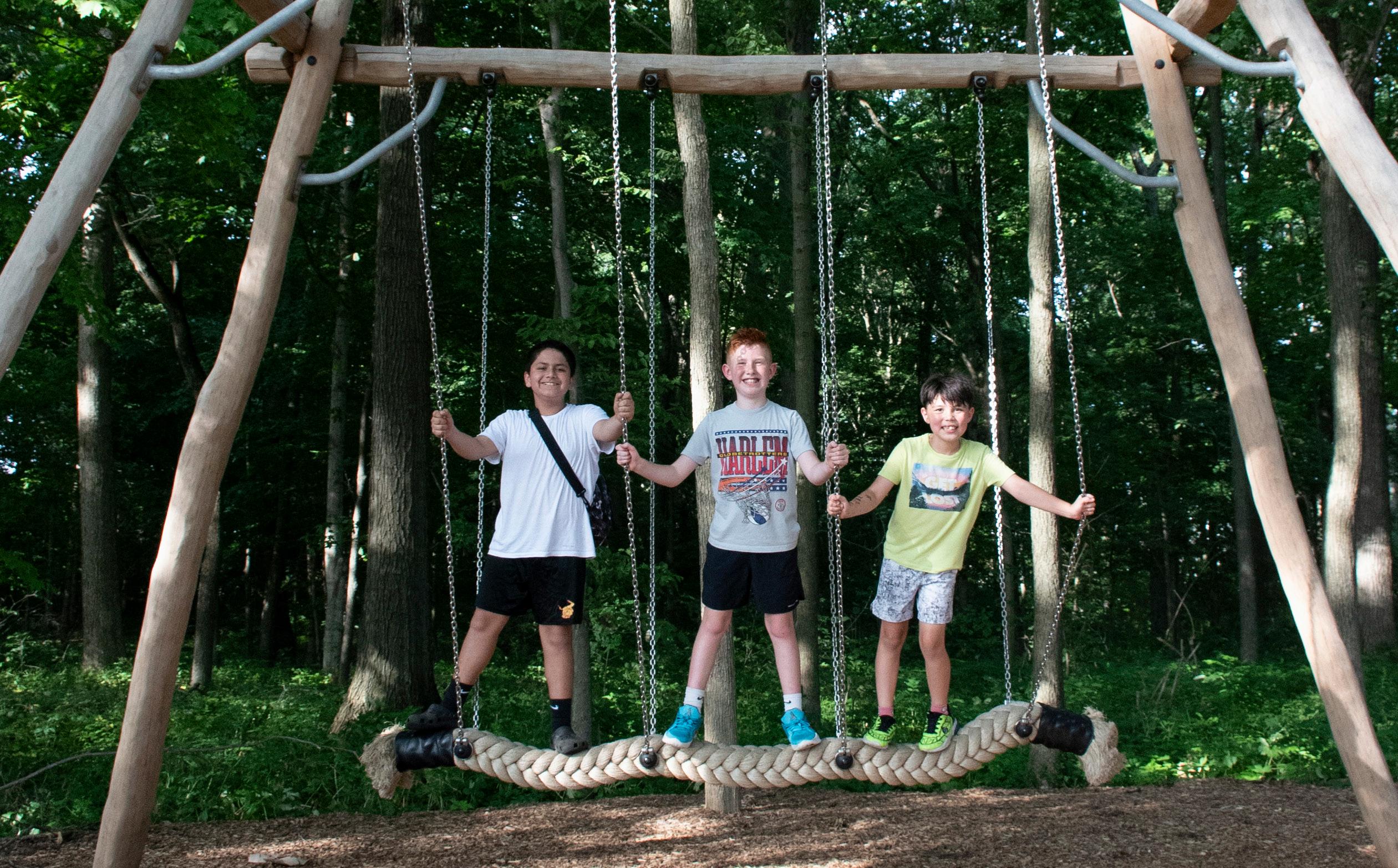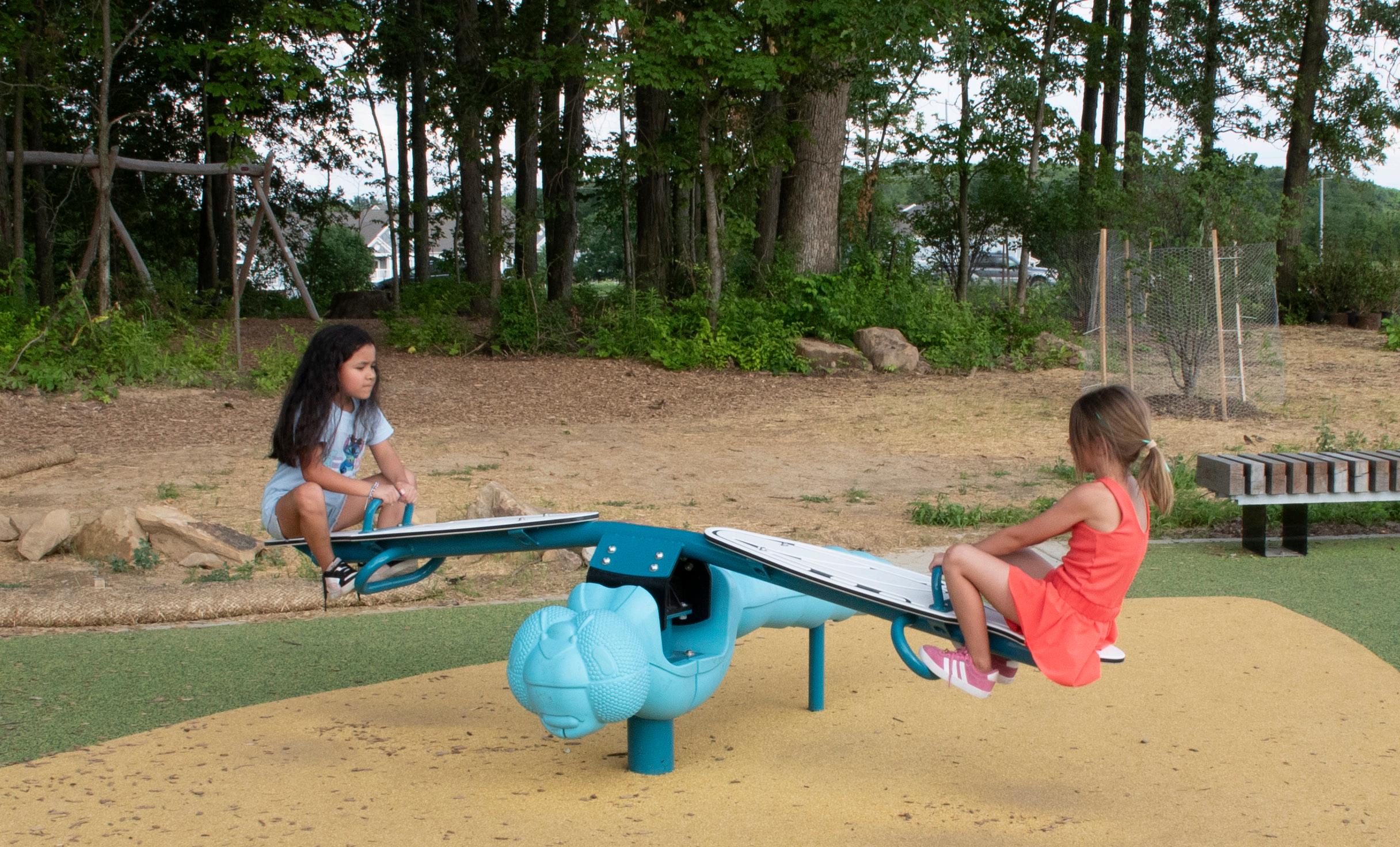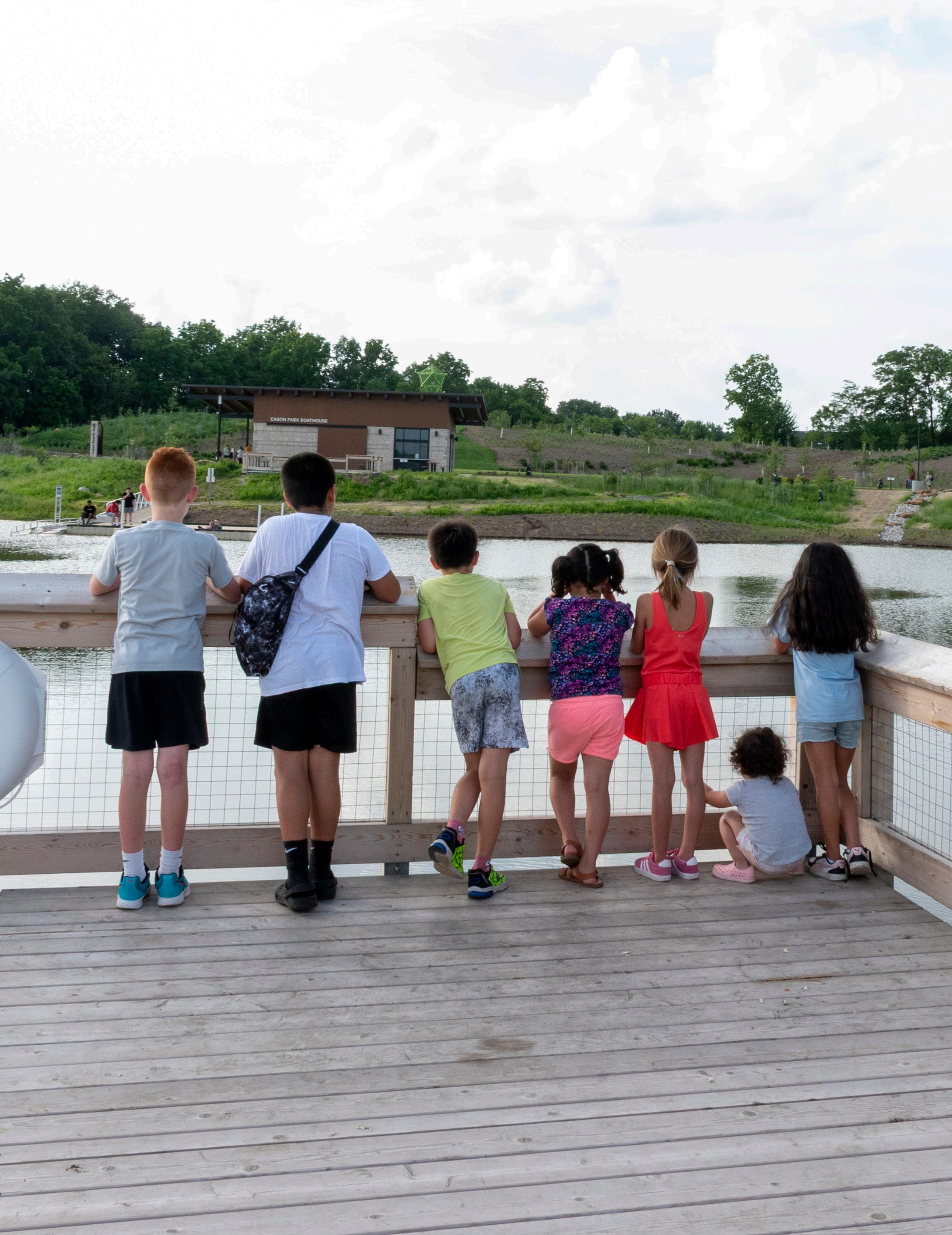
10 minute read
MOVING HISTORY: WEST LAFAYETTE'S CASON FAMILY PARK PRESERVES THE PAST, CREATES COMMUNITY
On a sunny afternoon in late spring, children scramble up boulders and shimmy down chutes built into a hillside, while others squeal with delight as they spin on a merry-go-round. Teenagers launch kayaks into a pond stocked with fish, while would-be anglers cast lines from the shore. Under a picnic shelter, one family grills up kebabs for lunch, while another decorates for a birthday party, with sparkly streamers billowing in the breeze. And, at the heart of it all, a historic one-room schoolhouse brimming with vintage artifacts and hands-on displays stands as an enduring example of community activism, partnership and perseverance.
Welcome to Cason Family Park, a nearly 30-acre greenspace now open at 2500 Cumberland Ave. in West Lafayette, near U.S. 231 – the city’s first new park in more than three decades. In addition to the meticulously preserved Morris Schoolhouse, as it is called, the nearly $18 million recreation area includes five playgrounds, multiple picnic shelters, an outdoor performance pavilion, about 3 miles of paved and unpaved trails, a fishing pond and a boathouse with canoes and kayaks for rent.
The park’s name pays tribute to the family that owned some of the surrounding land. In 2016, Lynn Cason, a custodian of the property since 1964, donated 13.6 acres to the West Lafayette Parks Foundation. It was that gift that spurred the creation of the Cason Family Park as it exists today.
At the park’s grand opening on May 22, Lynn and Carolyn Cason and about 25 other Cason family members celebrated with hundreds of West Lafayette residents and local government officials.
Taking it all in, Cason admitted that the completed park far exceeds the hopes he harbored back in 2016.
“My vision at that time was to have a few trails, a few teeter-tots and maybe a picnic shelter or two,” he said. “Well, look around. What a wonderful place it’s turned out to be. It’s unimaginable to me what this has become.”
Grand-opening organizers also honored many others who were instrumental in the park’s creation, including the architects, engineers and construction workers who sculpted a 25-foot promontory and a four-acre, 14-foot-deep pond out of a flat-as-a-pancake cornfield; the city government staff and officials who shepherded the project; members of the West Lafayette Redevelopment Commission, who used tax increment financing (TIF) revenues to cover the $17.7 million price tag; and especially the team of dedicated volunteers who dreamed up the idea of a park nearly a decade ago, and who saw it through to the end.

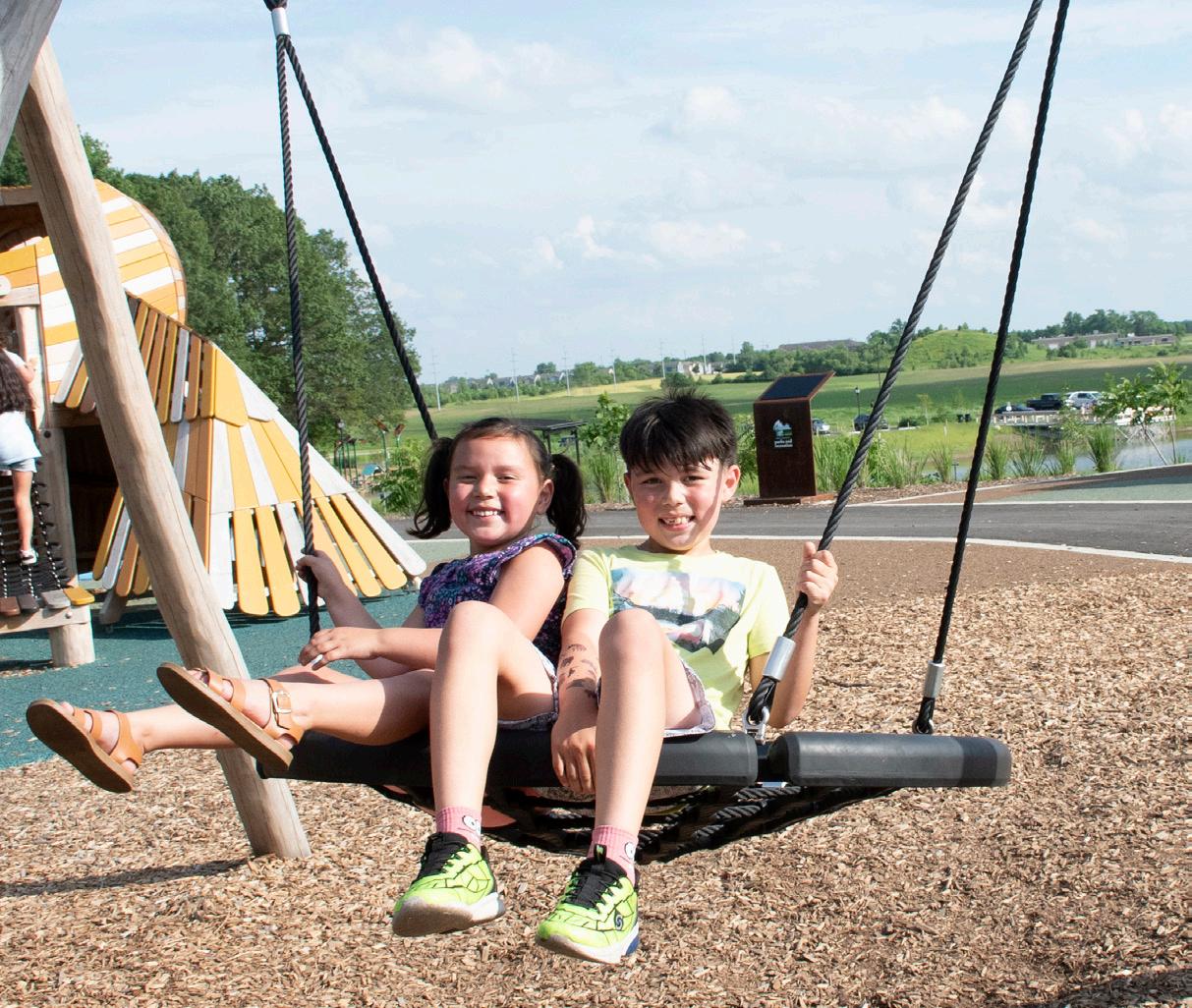
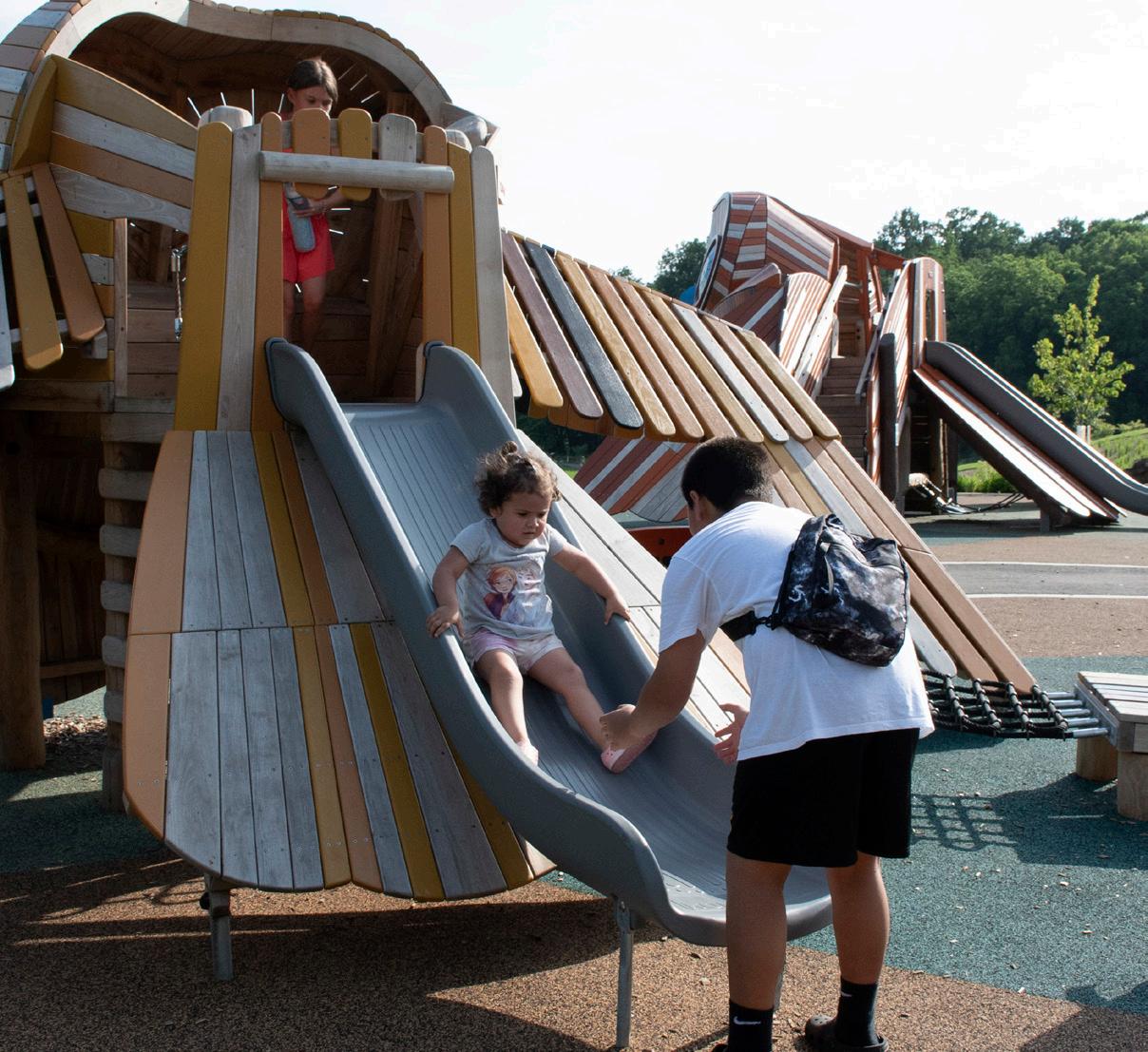
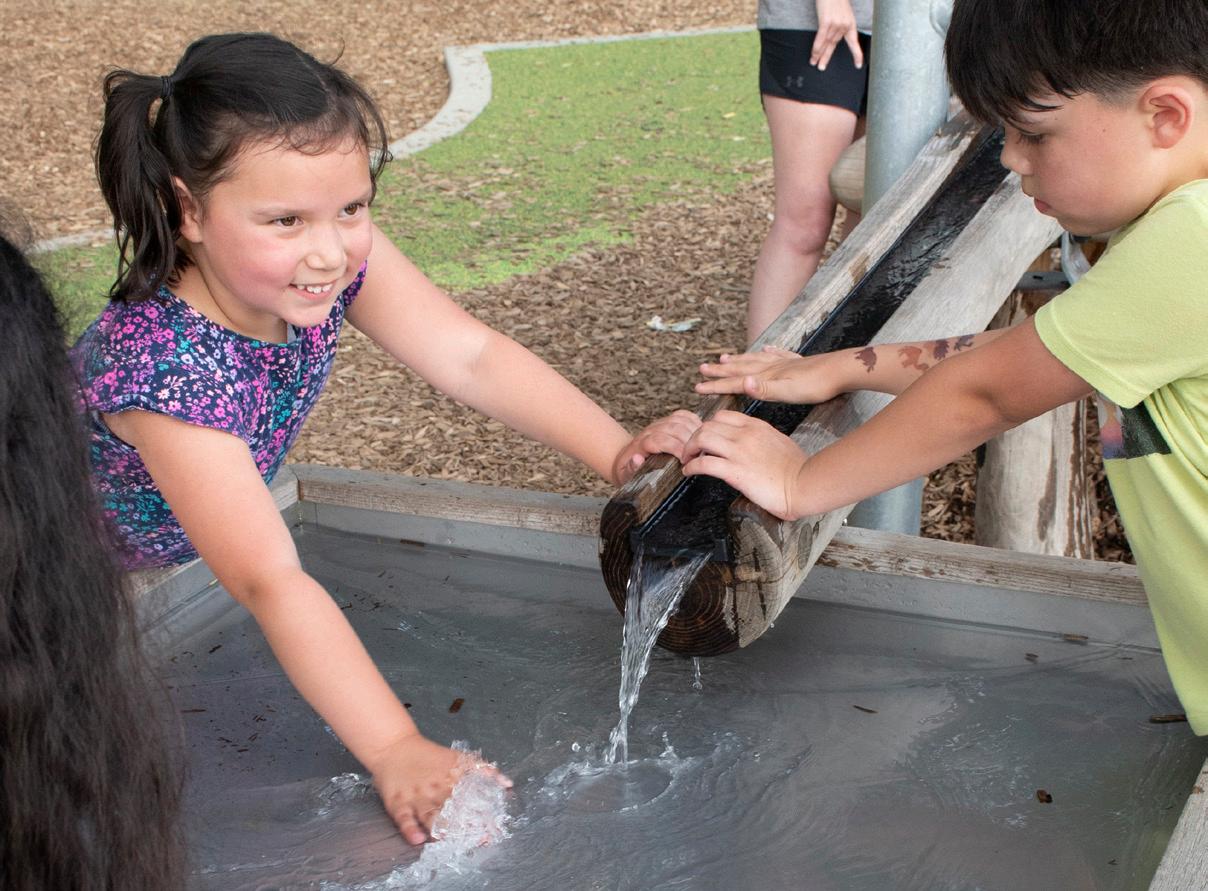
“Here you are seeing lots of partnership to make this property happen today,” said West Lafayette Mayor Erin Easter in her opening remarks, “and lots of commitment and leadership and connection.”
“Cason Family Park has been a long time in the making, and it represents the best of what a community can do when it works together,” said West Lafayette Parks Superintendent Kathryn Lozano. “It was a true community activity from the very beginning.”
‘A true community activity’
Indeed, the genesis of Cason Family Park goes back to well before the groundbreaking ceremony in September 2023 and even long before Lynn Cason gifted 13.6 acres.
The origins of the park can be traced back more than a decade, to the time West Lafayette resident Sue Eiler first noticed the Morris Schoolhouse near the corner of Cumberland Avenue and the new U.S. 231 highway.
The one-room brick building, originally known as Wabash Township School No. 5, was built in 1879, one of 108 one-room schoolhouses around Tippecanoe County at that time. It remained open for nearly 40 years, until school consolidation forced it to close in 1916. For generations, the structure languished in obscurity on property owned by the Cason family. Since the 1960s, Lynn Cason had been maintaining the building for use as a storage shed and corn crib – but outside of his family, no one seemed to know about the building, or care.
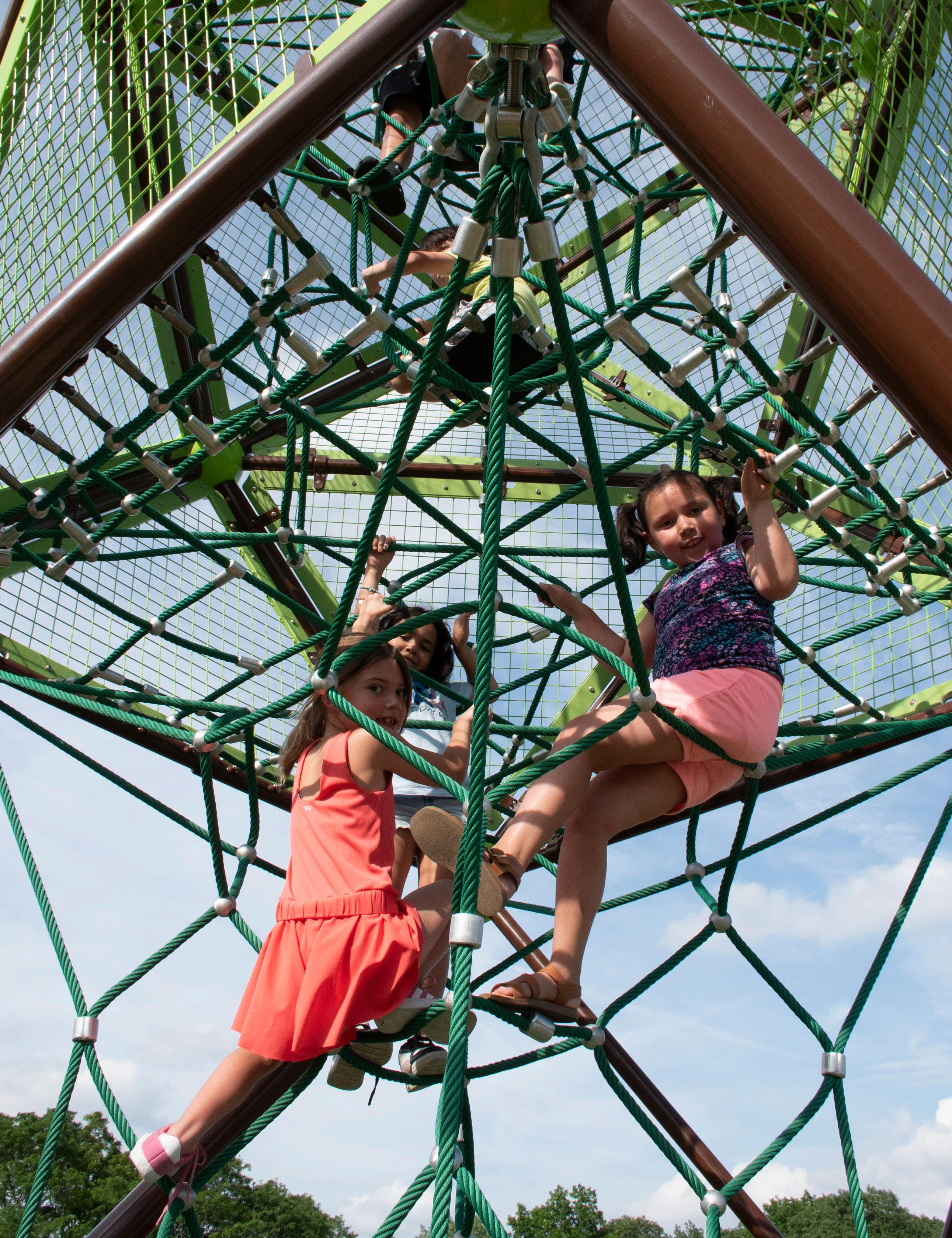
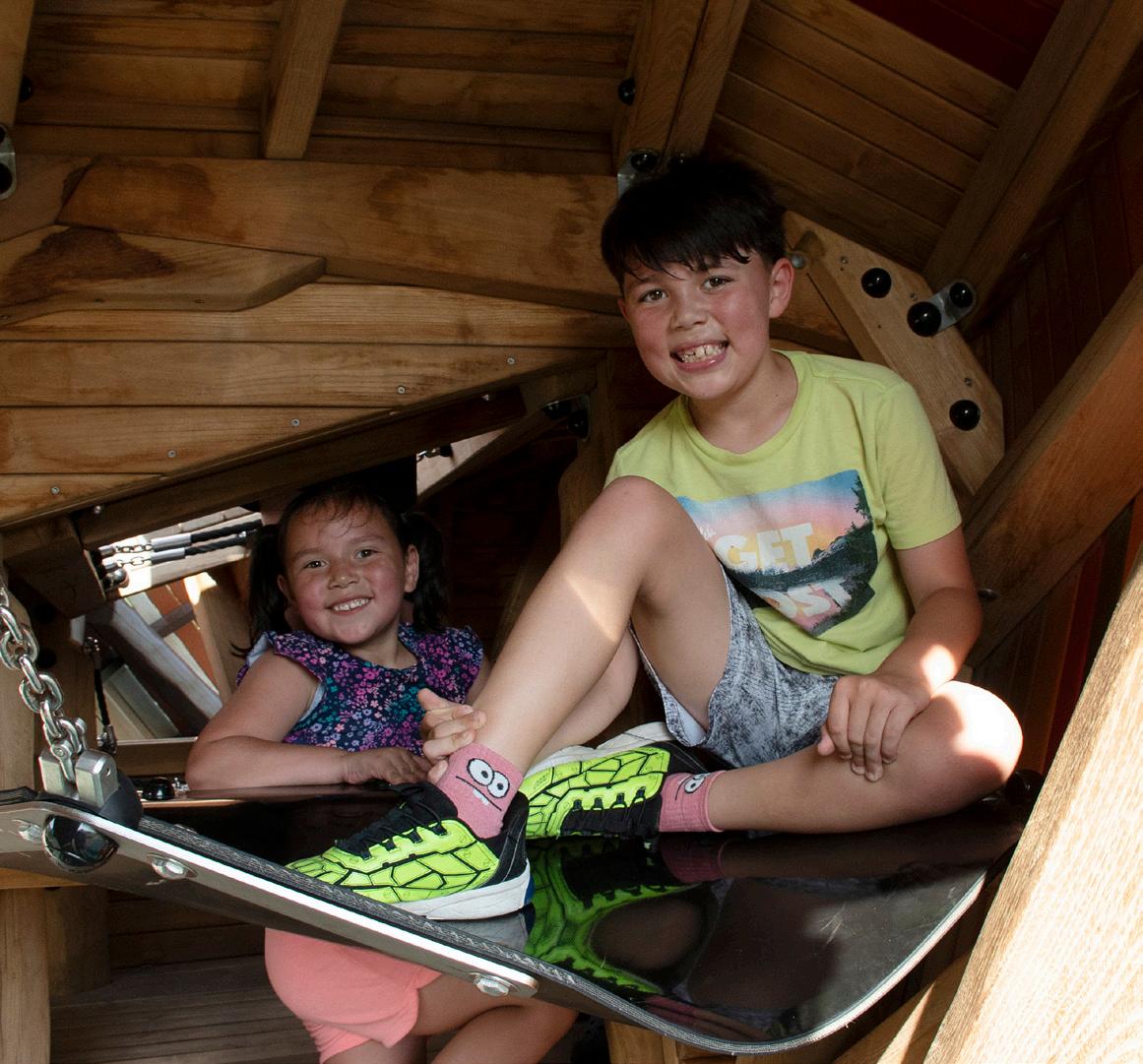
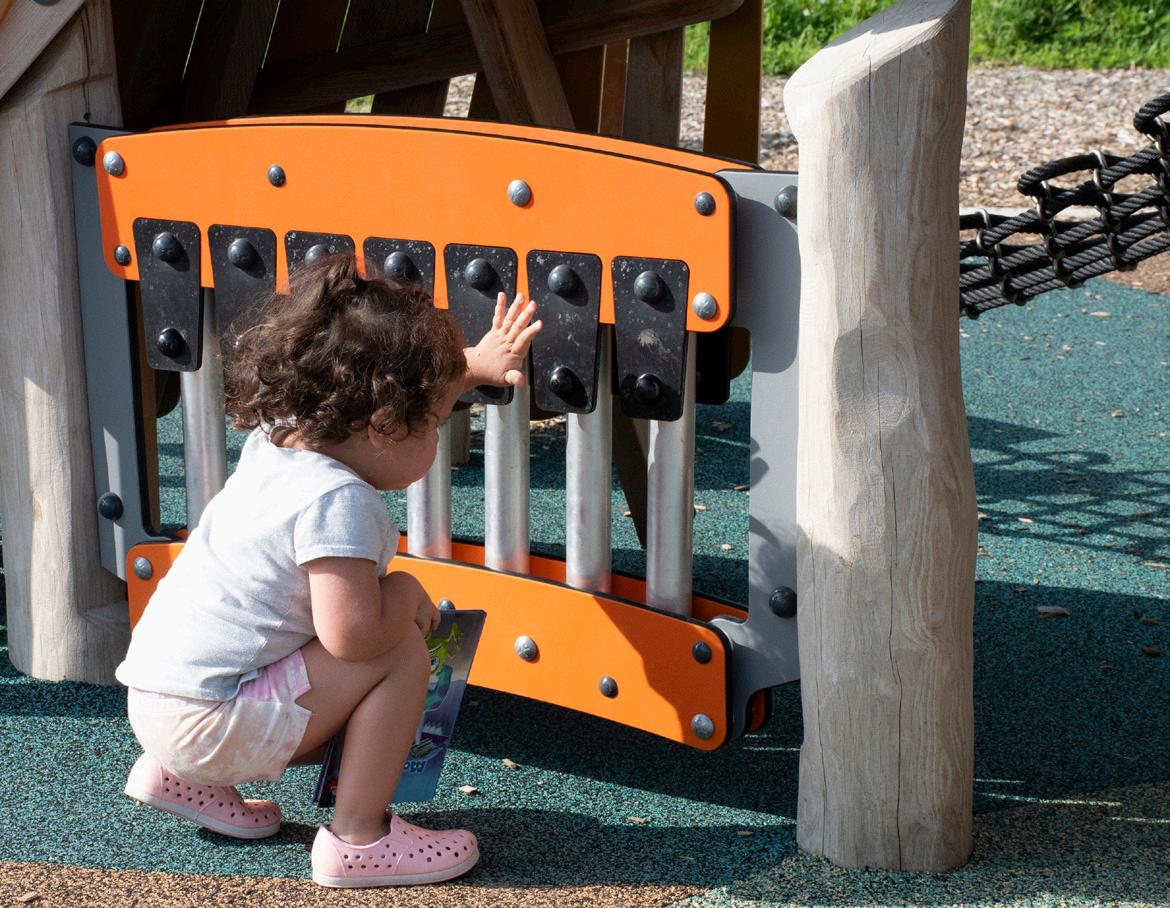
That changed in 2013 with the opening of the new 231 bypass, a five-mile stretch of the U.S. highway that routed traffic across fields and farms west of West Lafayette. Suddenly, hundreds of drivers on their daily commutes were passing within a stone’s throw of the forlorn little building, wondering what it was and what would happen to it.
More than most, Eiler recognized the structure’s historical significance. Several years earlier, she had written an in-depth paper for a literary club about Tippecanoe County’s one-room schoolhouses, and she was steeped in statistics and stories she had unearthed with help from the Tippecanoe County Historical Association.
In 2014, Eiler was alarmed to learn that a 23-acre parcel of Cason family land – the land on which the Morris Schoolhouse stood – had been sold to Franciscan Health. (The Franciscan Orthoindy Surgery Center is expected to be completed later in 2025.) Unless it could be moved by spring 2017, the Morris Schoolhouse would be demolished.
“I didn’t think much about it until I was driving by the location where it is now, and Franciscan had put up the sign saying, ‘Building for the Future,’ ” Eiler recalls. So, she took up a crusade to save the building.
“It was just a natural [thing] to say we ought to save it,” Eiler says.


With support from then West Lafayette Mayor John Dennis, Eiler convened a committee of interested, involved community members to save the Morris Schoolhouse. In one of the first acts of her campaign, Eiler connected with Lynn Cason and pulled him into the project, as well. As the building’s longtime caretaker, he was as invested as anyone in its future. The volunteers busied themselves with the work of appealing to local preservation organizations, raising funds, applying for grants, researching relocation sites, liaising with city government and considering the logistics of moving a 140-year-old brick building. But the deadline was looming, and still the committee had no viable site for relocation – until Cason casually offered to donate an adjacent tract of his family land and suggested that it could be turned into a kind of living history park. Eiler vividly remembers that pivotal moment.
“I think even at that point I didn’t appreciate how significant it was,” she says. That was kind of the start. We had land, so then we had the city’s support, for sure.”
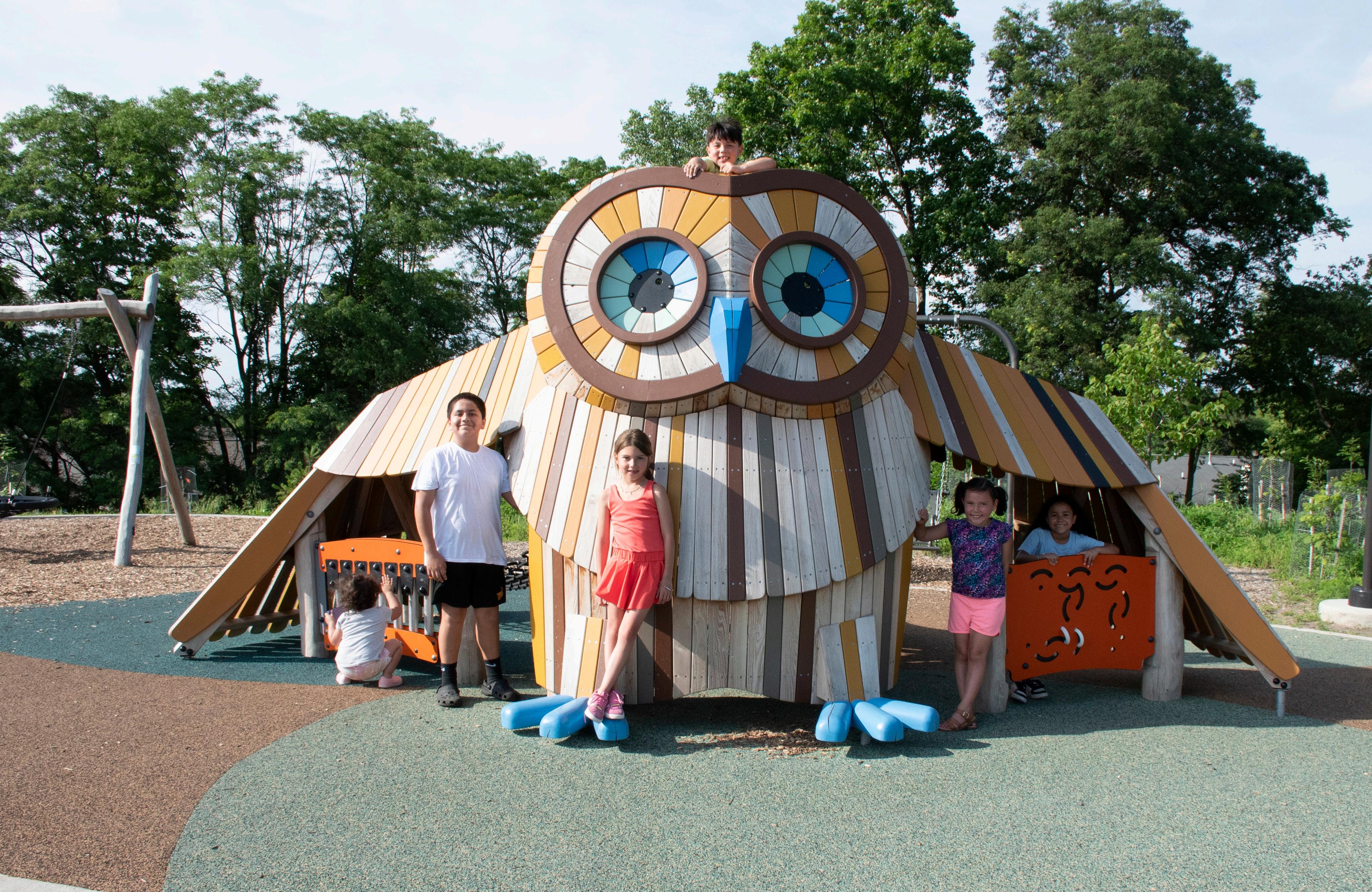
Moving history
In March 2017, the schoolhouse was moved 900 feet across a soybean field to its current location. Then, with Eiler and Cason leading the charge, the volunteer committee spent the next few years painstakingly restoring the building to its former glory. They replaced windows, replastered walls, refinished the original floors and furnished the space with period desks, antique wall charts, shelves of classic books and primers, and even a vintage potbelly stove and a hand-sewn 38-star American flag. The public was offered a preview of the mostly completed building during a couple of open house events in 2019. But while work on the schoolhouse was progressing, plans for the park that would surround it stalled when estimates came in at about one and a half times the $8 million budget – for a space that would have included a small retention pond and a single playground.
“It was just going to be a little park – 15 acres. It would have been nice, but it was too expensive,” Lozano says. And as they worked on whittling down the project, it got to a point where Lozano and Larry Oates, West Lafayette Redevelopment Commission president, just couldn’t get excited about it anymore. “We kept cutting and cutting and cutting and cutting [until] it just wasn’t the park that West Lafayette deserves,” Lozano says.
“Larry Oates looked at me and said, ‘Do you want to do this?’ And I said, “I don’t really want to do it anymore,’ ” she recalls. “And he said, ‘Let’s wait.’ And I said, ‘Okay.’ And you know, that’s a hard decision to make, because we’d already said we were doing it.” In the meantime, Eiler tracked down Bob Maier, whose family owned an adjacent 14-acre tract of farmland to the east along Cumberland Avenue, and, over many phone calls and conversations, planted the idea of selling it to the city.
“That was really a shot in the dark, to find the people who own it and convince them to talk to you and tell them what you’re doing, and get back in touch with them, and then get back in touch with them, and then get back in touch with them… And then to kind of build a relationship,” Eiler says.
After Eiler greased the wheel, the city was able to purchase the additional 14 acres, add it to the existing acreage gifted by Cason and double the size of the planned park. In June 2023, the redevelopment commission approved a new budget, committing to spending $17.7 million in TIF funds on the project. And finally, after a groundbreaking ceremony in September of that year, work on the new park began in earnest.
A space for everyone
Today, the beautifully restored schoolhouse is the centerpiece of the sprawling Cason Family Park, and it will play a major role in the park’s programming, with scheduled activities and volunteer docents on hand at certain times, Lozano says. Outside the schoolhouse, an outdoor classroom offers space for special events and talks.
The park paths already connect to the 27 miles of paved paths in West Lafayette’s trail system, and plans are in the works to connect directly to the Celery Bog Nature Area’s paved Cattail Trail to the south, as well, making for an easy two-for-one fieldtrip combo for local school groups.
Throughout the rest of the park, in addition to the fishing pond, boat house and amphitheater, a variety of play spaces appeal to children of all ages and their families, including one playground crowned with magnificent owl-shaped play structures, another playground topped with a multi-level rocket-shaped jungle gym, a toddler playground with a water table, and a whimsical mushroom-hut play area tucked into the woods.
“This is a once-in-a-lifetime thing for a community,” Lozano says. “A big, new park like this doesn’t happen very often. We’re very lucky to have this happen.”
“We are not just preserving history, we are creating new opportunities for community connection, outdoor recreation and shared memories,” Mayor Easter remarked on opening day. “This park is a place where generations will gather to play, to learn, to celebrate and reflect on all the blessings of our community. It is a space that belongs to everyone in West Lafayette.”★
